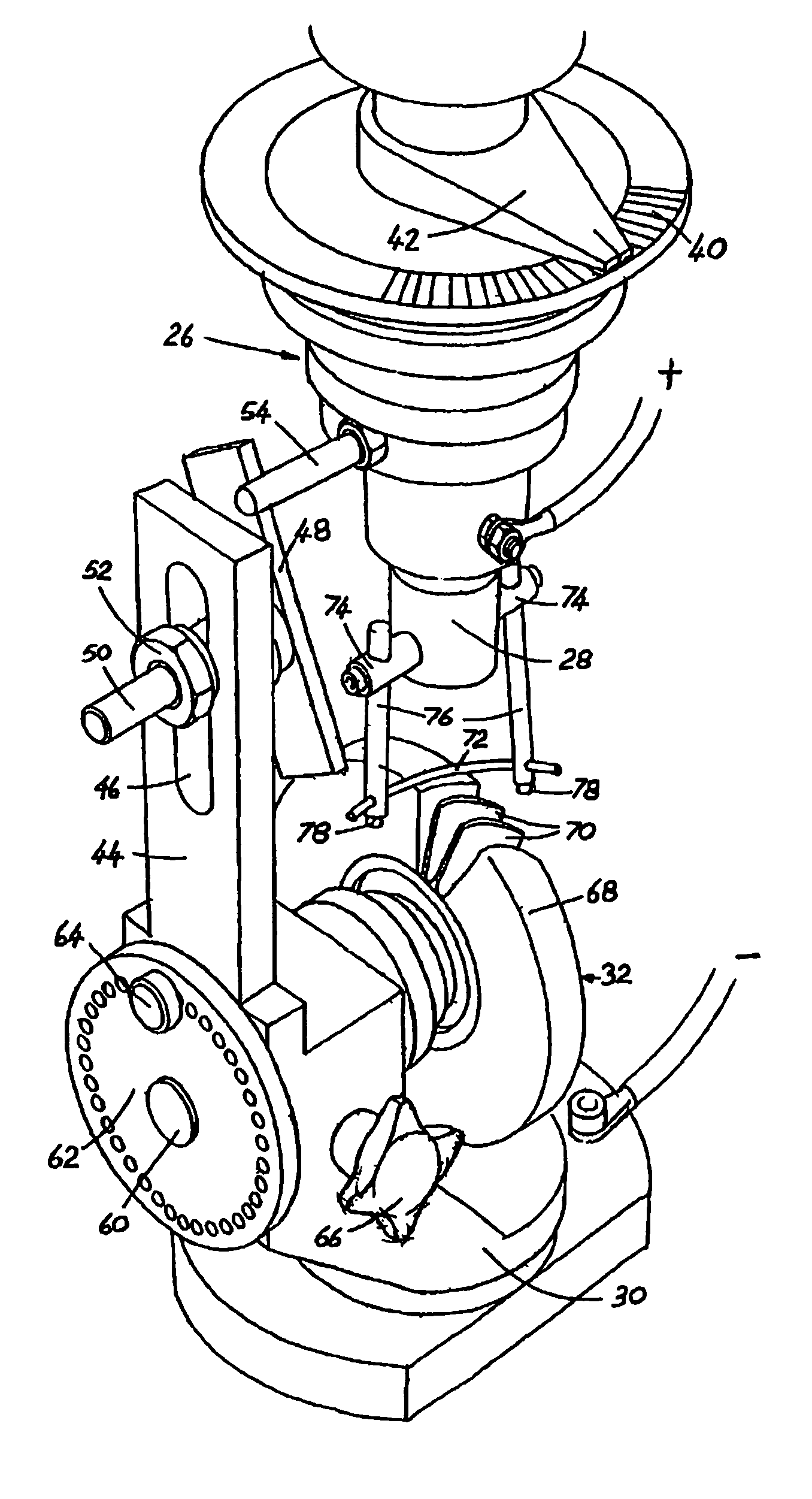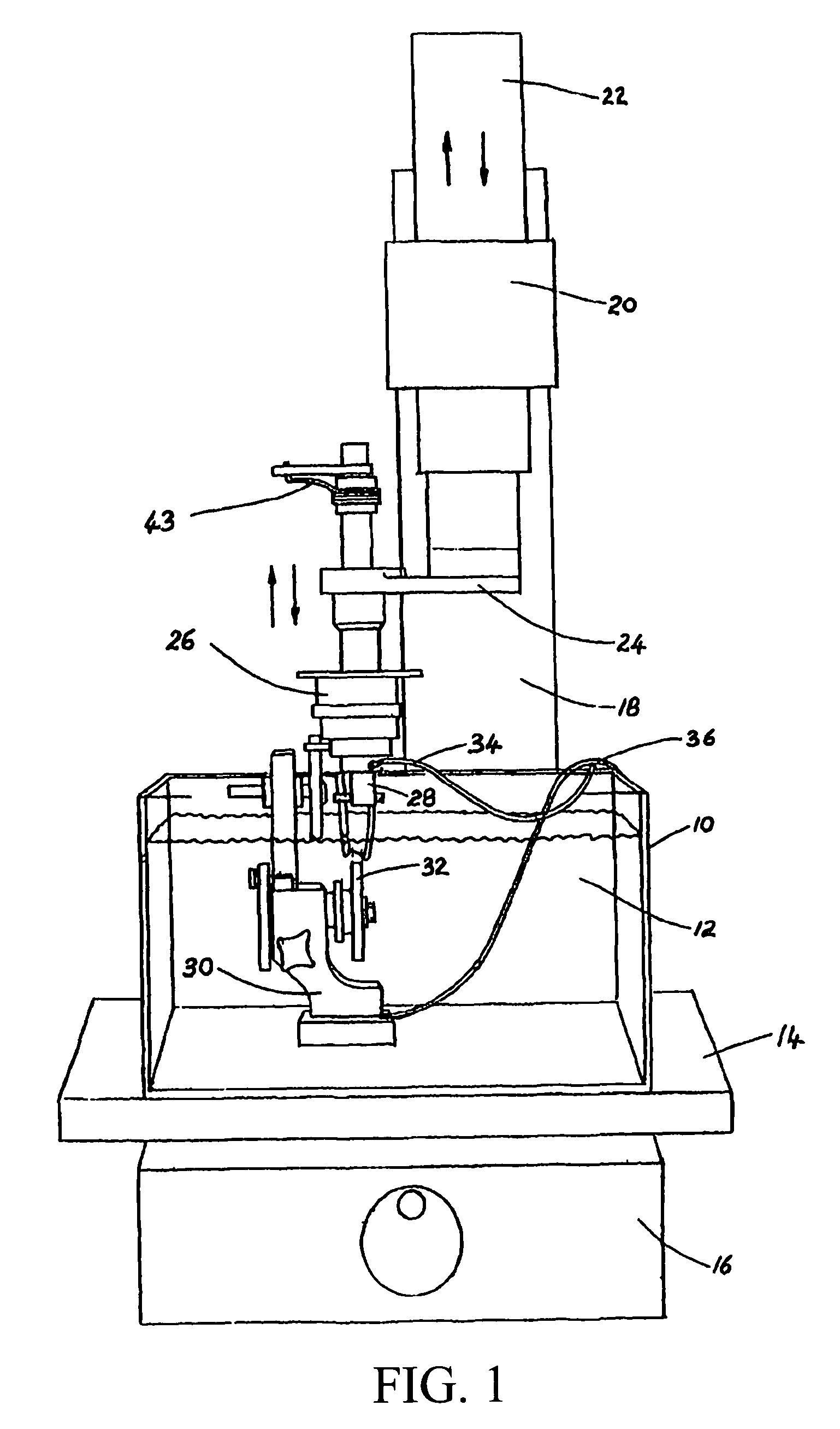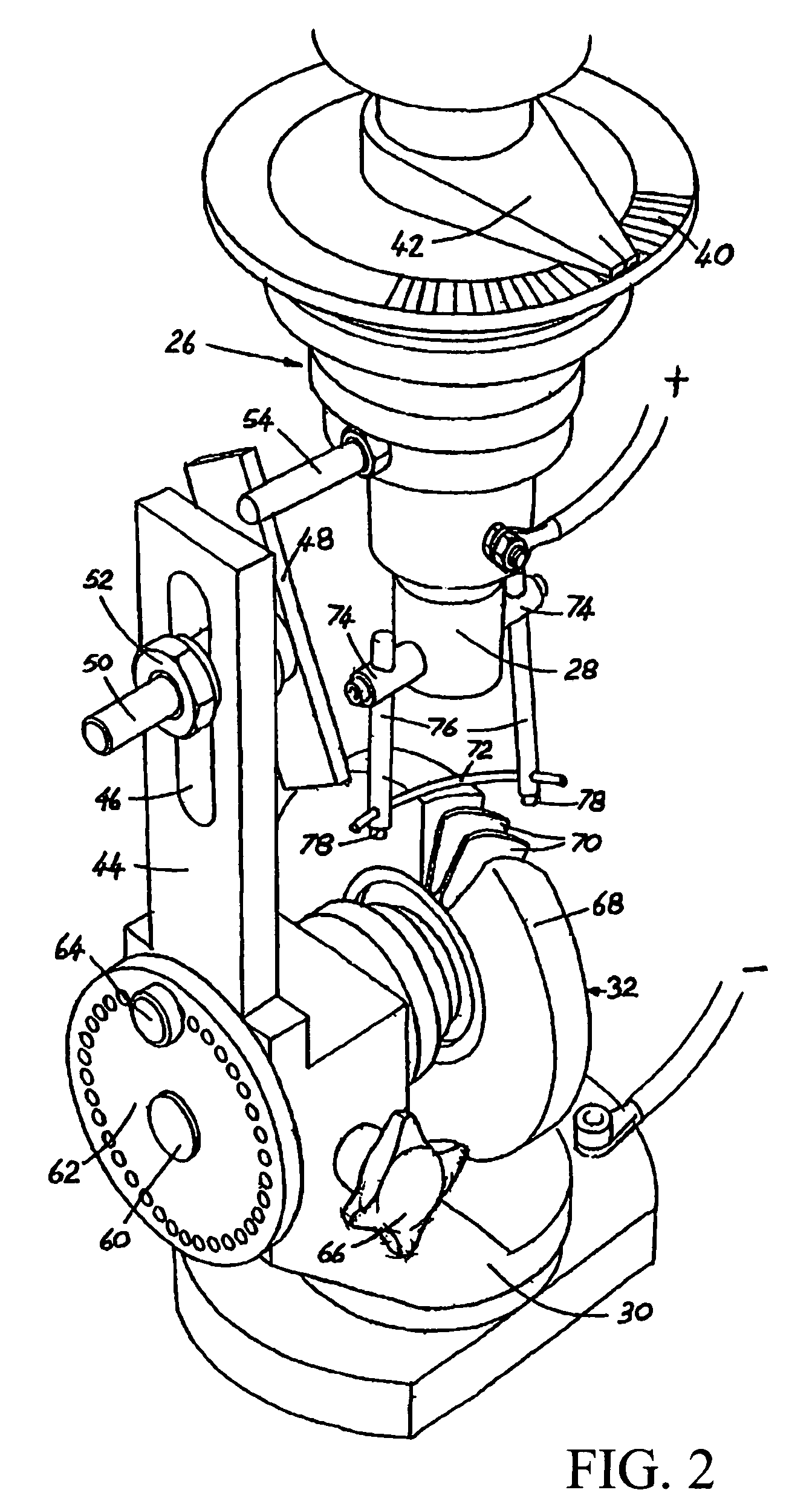Method and apparatus for the manufacture of fans, turbines and guide vanes
a technology of guide vanes and turbines, which is applied in the direction of electrical-based machining apparatus, climate sustainability, air transportation, etc., can solve the problems of intractable construction of such bladed discs, excessively difficult pattern construction, and reduced production efficiency, so as to promote the desired airflow, reduce stress concentration in the formed blades, and achieve high accuracy
- Summary
- Abstract
- Description
- Claims
- Application Information
AI Technical Summary
Benefits of technology
Problems solved by technology
Method used
Image
Examples
Embodiment Construction
[0059]Referring first to FIG. 1, the illustrated apparatus comprises a tank 10 containing a suitable liquid quenching medium 12, which is a dielectric fluid such as a suitable paraffin oil or water based alternative, in which to conduct spark erosion operations. The tank is supported by a platform 14, under which is a housing 16 for the necessary electrical and control equipment, which is of any kind that is in itself known in the art.
[0060]Behind tank 10, as shown, is a pillar 18. Towards its upper end the pillar carries a hydraulic drive 20, which moves a drive column 22 up and down under the control of the equipment in housing 16. An electronic servo drive may be an acceptable alternative. The lower end of the drive column carries a horizontal support arm 24, which carries tool holder head 26, to be described in more detail in relation to FIG. 2. The tool holder head carries tool holder 28.
[0061]Within tank 10, immersed in the liquid 12, is a pedestal 30, which carries a workpiec...
PUM
| Property | Measurement | Unit |
|---|---|---|
| length | aaaaa | aaaaa |
| length | aaaaa | aaaaa |
| diameter | aaaaa | aaaaa |
Abstract
Description
Claims
Application Information
 Login to View More
Login to View More - R&D
- Intellectual Property
- Life Sciences
- Materials
- Tech Scout
- Unparalleled Data Quality
- Higher Quality Content
- 60% Fewer Hallucinations
Browse by: Latest US Patents, China's latest patents, Technical Efficacy Thesaurus, Application Domain, Technology Topic, Popular Technical Reports.
© 2025 PatSnap. All rights reserved.Legal|Privacy policy|Modern Slavery Act Transparency Statement|Sitemap|About US| Contact US: help@patsnap.com



